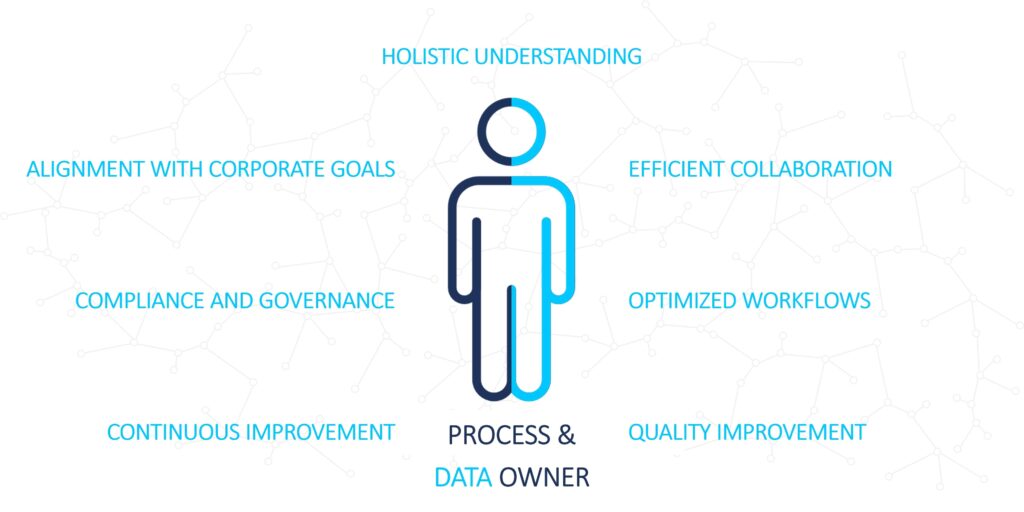
The Power of Automation in Data Migration
Automation is a practical solution to speed up and optimize the entire data migration process

An SAP Master Data Governance project can be a real challenge for organizations facing limited resources. In this blog post, we explore the challenges of data governance in a corporate setting and present an approach for effective data management amidst resource constraints.
Imagine a spooky corporate world where a company spends a lot of money on a fancy project to improve how it handles important information using SAP Master Data Governance (MDG). The company is excited at first, thinking this project will transform its data management and make things run smoothly, efficiently, and securely.
But as the project goes on, a dark cloud appears over their high hopes. Something crucial to the project, the organizational governance part of SAP MDG, which is vital for good data management, gets unexpectedly cut. Even though the company has invested a lot, it faces a scary problem due to not having enough resources.
In this scary story, the company deals with the consequences of ignoring governance in its data improvement project. As the project slows down, the company faces uncertainty and fears that its data quality, reliability, and security might be compromised.
However, there is a glimmer of hope in this spooky situation – the Data Governance Light approach. This strategy is known for being adaptable and practical, like a guiding light in the darkness. It helps organizations facing resource challenges navigate the complexities of data governance without getting bogged down in unnecessary details.
At its core, data governance is like a set of rules and processes that protect an organization from anything bad happening to its data. The goal is to create a consistent and controlled environment for managing data – a safe place where trust is built, rules are followed, and decisions are made clearly and effectively.
But just like in a horror story, there are challenges. The fear of not having enough resources makes it hard for organizations to implement and maintain strong data governance. It is difficult to raise enough money, hire qualified people, and define important roles like Data Owners and Data Stewards.
During this struggle, the Data Governance Light approach comes to the rescue. By using existing structures and focusing on the essentials, this approach offers a flexible and adaptable framework. It helps organizations navigate the tricky waters of data governance even if they don’t have a lot of resources.
Facing resource challenges, the approach suggests combining the responsibilities of Business Process Managers and Data Owners. The Business Process Manager, who usually focuses on improving workflows, now also takes on responsibilities related to data quality, security, and usage. This creates a unified function of the Process & Data Owner that oversees both business processes and data governance.
The unified role of the Data & Process Owner offers the following advantages:

Nevertheless, combining roles poses distinct challenges such as excessive workload, conflicting priorities, and the potential loss of expertise. Organizations must meticulously weigh the drawbacks and advantages to determine the viability of merging these roles successfully. Presently, numerous Business Process Managers undertake governance tasks as part of their daily operations, often in an ad-hoc and uncoordinated manner. Implementing the Data Governance Light approach, alongside a clearly defined mandate for the Process & Data Manager, can alleviate this issue. This approach ensures transparency and efficiency in alignment and responsibilities.
As the story unfolds, the Data Governance Light approach becomes a symbol of resilience. It helps organizations overcome the limitations that once haunted their dreams of better data management. In this spooky world, data is no longer a problem – it becomes a powerful tool that propels organizations toward a future where the nightmares of compromised governance are defeated, and effective data management becomes a reality.
In a corporate horror story, an SAP MDG project goes awry due to governance cutbacks. This is where the Data Governance Light approach comes in —a beacon in resource constraints, merging roles for efficient data management. Despite all the challenges, it symbolizes resilience, guiding organizations to conquer compromised governance nightmares and harness data for a brighter future.

Automation is a practical solution to speed up and optimize the entire data migration process

Discover how you can streamline your financial master data management and reengineer financial processes with SAP MDG Finance.

Whilst it seems straightforward to carry out either a blood transfusion or a data migration, the actuality proves far more complex.

In this blog article, Camelot introduces you to the main principals of Demand-Driven Supply Chain Management.